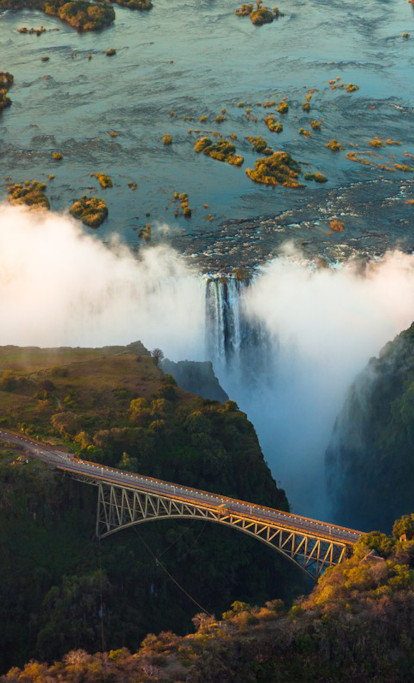The best time to visit Zimbabwe depends on what draws you to it. Are you desperate for a glimpse of a prowling lion, captivated by the magic of one of the world’s Natural Wonders, or planning to traverse misty mountain trails? Zimbabwe is generally warm, but early mornings and evenings in the coldest months of June and July can be chilly. Rainy season is between late November and March, and dry season falls between April and early November. The best time to visit Zimbabwe is considered to be between May and September, when the weather is cooler and dry. During this period, the Victoria Falls are in full flow, game viewing is excellent, and the conditions are great for water sports. However, Zimbabwe has something to offer all year round, so photography lovers and birdwatching enthusiasts might choose to visit during rainier months to experience dramatic landscapes and quieter parks. To help you decide which season is best for you, take a look at our list of the country’s key regions and when you can make the most of them.
The Highveld Region
This vast plateau runs north-east to south-west, covering approximately one quarter of the entire country and including the country’s capital, Harare. The higher altitudes here make for cooler temperatures (with temperatures averaging 24°C). The Eastern Highlands are located in the highveld, stretching from Nyanga in the north to Chimanimani in south. This area experiences the heaviest rainfall in the country, with a more prolonged rainy season (October to April) and the possibility of rain throughout the year. While the prospect of wet days may not seem particularly appealing at first, this climate makes for astonishingly beautiful landscapes that are completely different from the rest of Zimbabwe. The Eastern Highlands are a great place for hiking, birdwatching, climbing, riding and even golfing. Visit between March and July when there’s less chance of rain and the green vegetation is at its best.
Matabeleland North Province
This province is where you’ll find Hwange National Park and the majestic Mosi-oa-Tunya (Victoria Falls). One of the warmest parts of Zimbabwe, it receives an average of 11 hours of sunshine per day (for context, the UK’s average is around five!). Daytime temperatures are therefore comfortably warm all year round, but it can get cold at night so be sure to wrap up. Hwange National Park is the largest natural reserve in Zimbabwe, home to over 100 mammal and 400 bird species. Game viewing is at its best during the drier months of August, September, October and early November, when animals congregate around the park’s few watering holes.
Victoria Falls is a year-round destination, and the best time to visit depends on what you plan to do here. Luckily, in Zimbabwe the water flows permanently, but the falls are more powerful at different times of the year. If you simply want to gaze at the spectacular sight of the world’s greatest sheet of falling water, plan your trip for between March and May when the rainy season has ended, and the falls are at their peak. During this time, a whopping 1,320,860 gallons of water falls per minute, and their spray extends between 20 and 40 miles. The falls begin to dry up between July and December, but there will still be plenty of water flowing. This is the perfect time to see wildlife and geological formations, but bear in mind that September onwards is extremely hot. The ‘Emerald Season’ from late December to February is peak rainy season. While December and January are best avoided, February is a wonderful time to see the falls surrounded by blooming flowers, lush greenery and plenty of birds – just be prepared to get wet. White water rafting is possible throughout the year depending on rainfall, but adrenaline junkies should plan their trip for between August and December, when the water levels are lower and the runs more thrilling.
Matusadona and Mana Pools National Parks
Matusadona National Park - located on the shores of shimmering Lake Kariba and Mana Pools in the country’s far north - offer numerous wildlife viewing opportunities. Their landscapes are rich in vegetation which attracts animals like buffalos, zebras and impalas, along with game like lions, leopards and elephants. Despite being close to the highveld plateau in the north, both parks have a low altitude, and are therefore much hotter. The best time for wildlife viewing is during the dry months between May and October, when you can move through the parks on foot, in a vehicle or by boat to experience everything they have to offer. However, if you’re sensitive to the heat, avoid late September and October when temperatures can spike to 40°C.
Southern Regions
The hottest and driest areas of Zimbabwe are the southernmost regions like South Gonarezhou National Park, which is located on the border with Mozambique, and along Limpopo River, which borders South Africa. In these areas, rainfall














